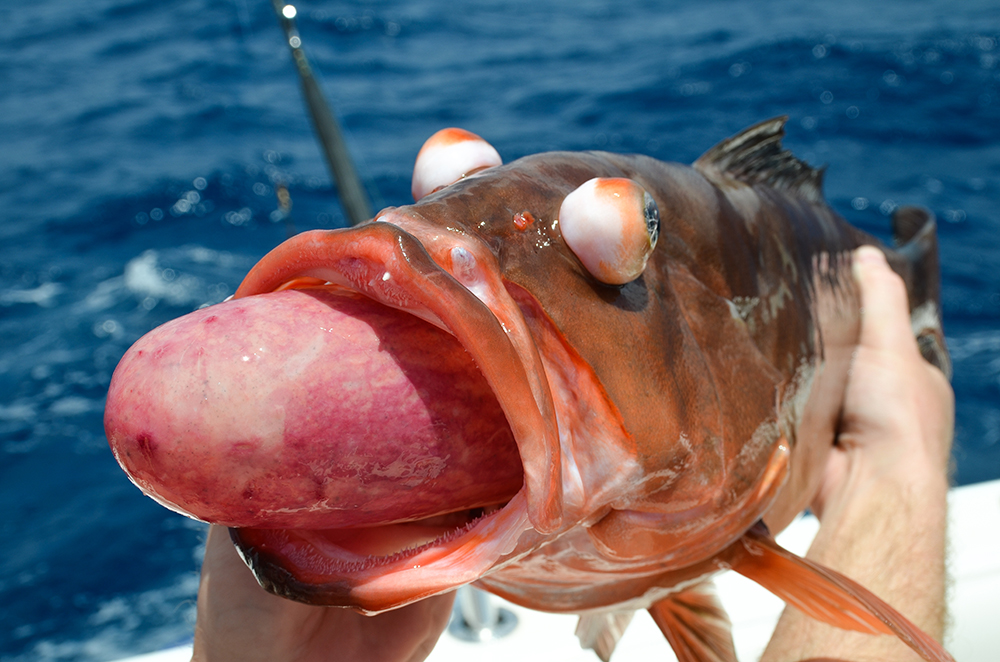By: Nick Haddad
How Barotrauma Impacts Species Differently
When you reel in a fish from deep water, you might notice it looks bloated, its eyes are bulging a little or it just appears sluggish at the surface. That’s not entirely from stress from the fight, it’s likely from barotrauma, a pressure-related injury that affects certain fish when they’re brought rapidly to the surface.
For anglers who care about responsible catch and release, understanding barotrauma is an essential aspect of fishing. Not all fish experience it the same way, and knowing how species differ can make the difference between a fish that survives and one that doesn’t.
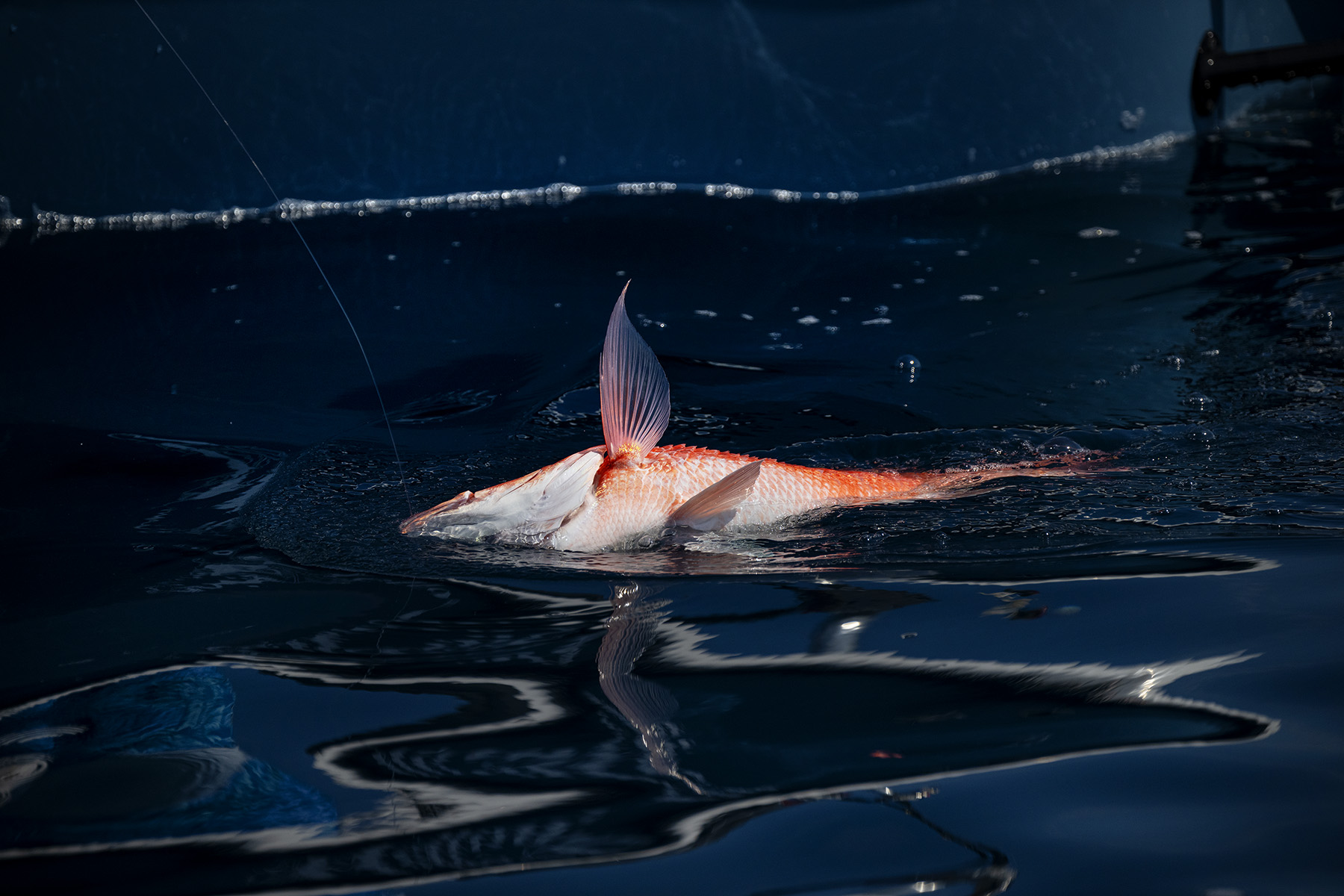
Understanding Barotrauma
Barotrauma occurs when a fish experiences a sudden drop in pressure as it’s brought up from deeper water to the surface. Most reef fish, such as snapper and grouper, have a gas-filled organ called a swim bladder that helps control buoyancy. When pressure decreases quickly during ascent, the gas inside expands leaving them bloated and unable to return to depth. It’s important to note that the swim bladder isn’t the only organ or gases responsible for barotrauma, as is evidenced by eyes bulging in fish.
Most reef fish can’t release this excess gas on their own, making it hard or even impossible for the fish to return to depth without additional assistance from the angler.
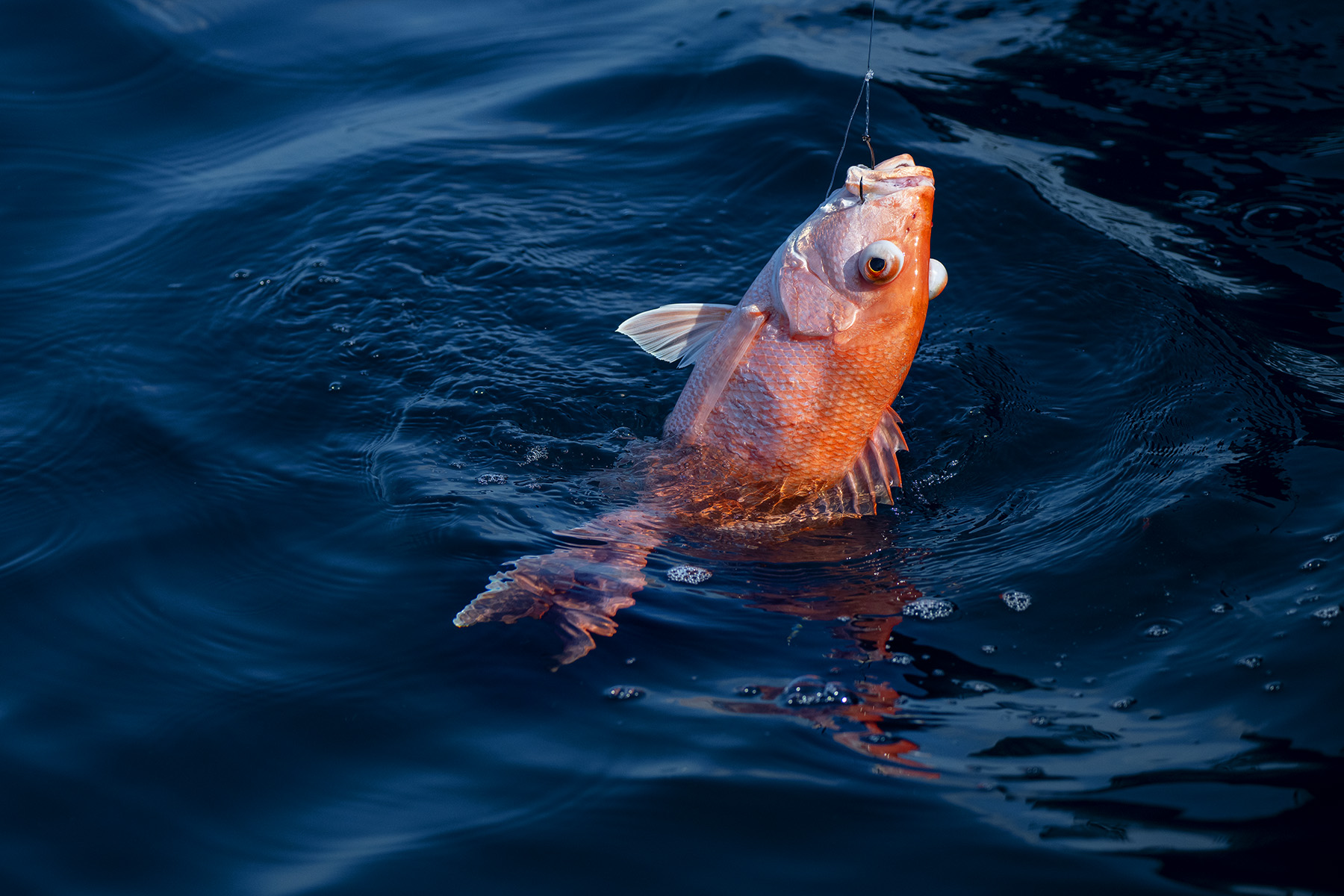
What Happens to a Fish during Barotrauma
The signs of barotrauma are often easy to spot:
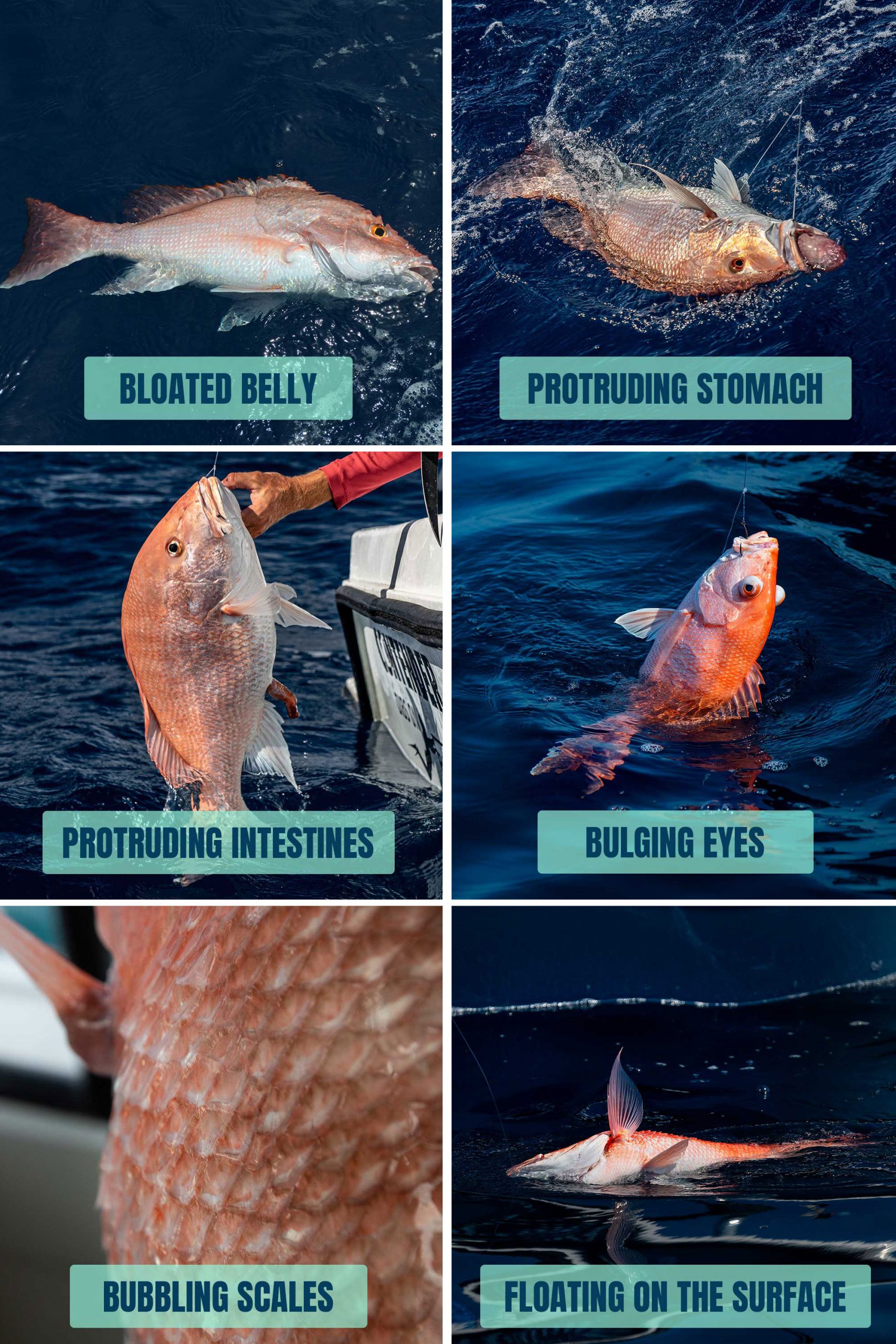
Why Depth and Pressure Matter
Pressure increases rapidly with depth — roughly one atmosphere every 33 feet. The deeper that fish is caught, the greater the risk of mortality from barotrauma. A lot of anglers ask, “What depth should I worry about barotrauma?”. There’s no straightforward answer besides the fact that fish may start feeling the effects as early as 30’ or so. For example, hogfish tend to get severely affected by barotrauma around 30-35’ of water, while gag grouper would have no problem swimming down on their own in that depth or even close to double that depth in 60’ of water.
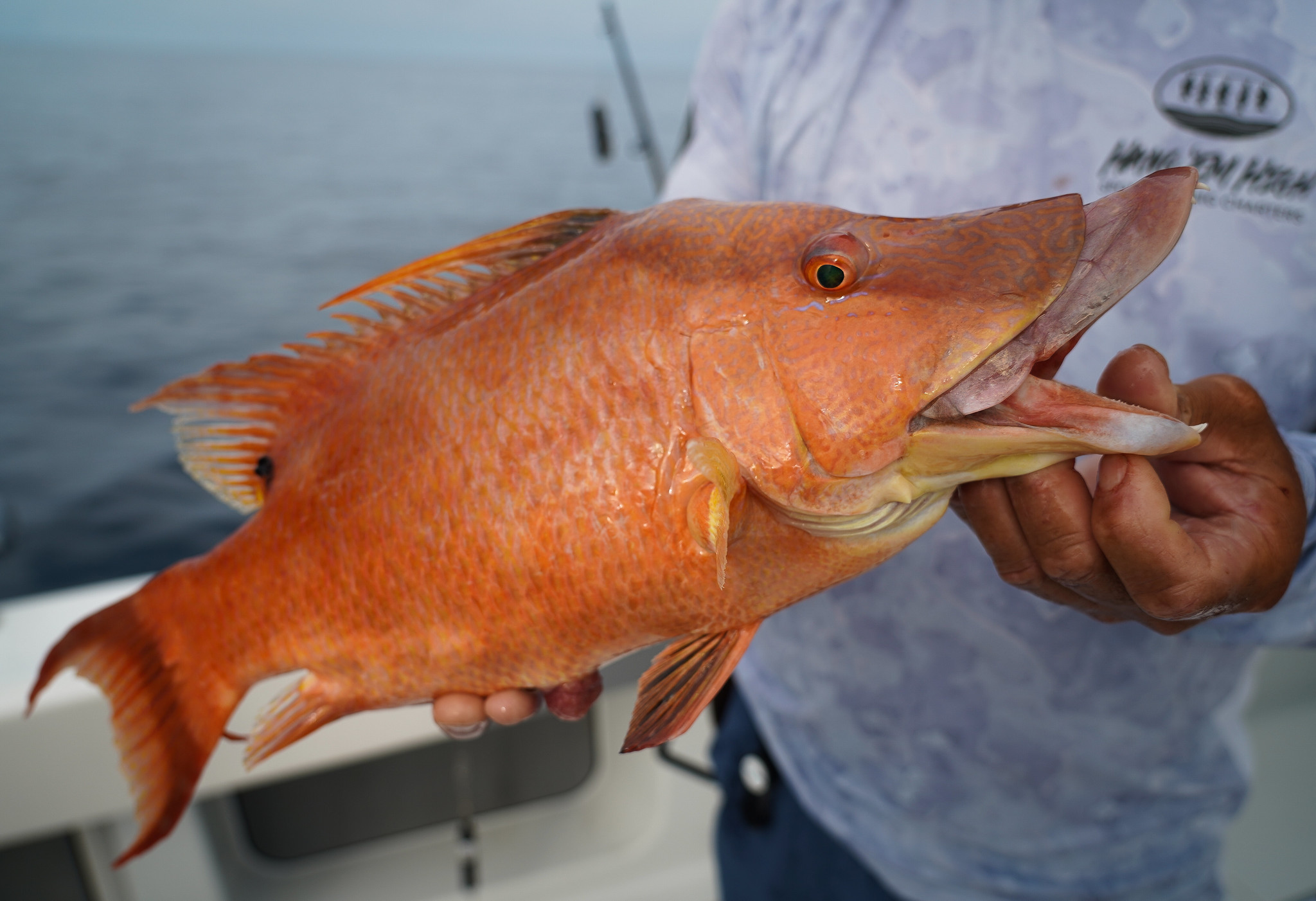
Species More Vulnerable to Barotrauma
Some fish are naturally more prone to barotrauma than others. This usually depends on where they live and how their swim bladders function.
Reef and Bottom-Dwelling Species
Species like groupers, snappers, and rockfish are among the most vulnerable. These fish spend most of their lives near the seafloor, where pressure is high and stable. Their closed (physoclistous) swim bladders do not allow gas to escape, so when brought up rapidly, the expanding gas has nowhere to go — leading to severe barotrauma.
Pelagic Species
Fast-moving, open-water fish such as tunas, mackerels, and dolphinfish are affected differently. Many lack a swim bladder all together, or have a different type of swim bladder that allows them to regulate gas more efficiently. Barotrauma is typically not a concern for these species when assessing catch and release mortality.

Freshwater vs. Saltwater Species
Barotrauma occurs in both freshwater and saltwater, but the effects may differ slightly. In deep freshwater lakes, species like lake trout or walleye can show similar symptoms to reef fish. However, because freshwater environments are often shallower, the overall risk may be lower compared to deep offshore habitats. You may have heard of freshwater anglers “fizzing” smallmouth bass or walleye anglers using a descending device to help them recover from barotrauma!
Why Understanding Species Differences Matters
For conservation-minded anglers, knowing how and when barotrauma affects each species is a powerful tool. It helps you make better decisions about how to handle, release, and ultimately protect the fish you catch.
Tailoring Release Techniques
The right release method depends on both depth, species and situation. For reef fish, descending devices are often going to be the safest tool to return them to depth, when needed. Venting tools may also be beneficial in scenarios where fish are quickly coming up to the deck.
If a fish is not experiencing barotrauma due to depth reasons for its anatomy and physiology, minimizing handling and air exposure is the best technique to release them, often with a dehooking tool.
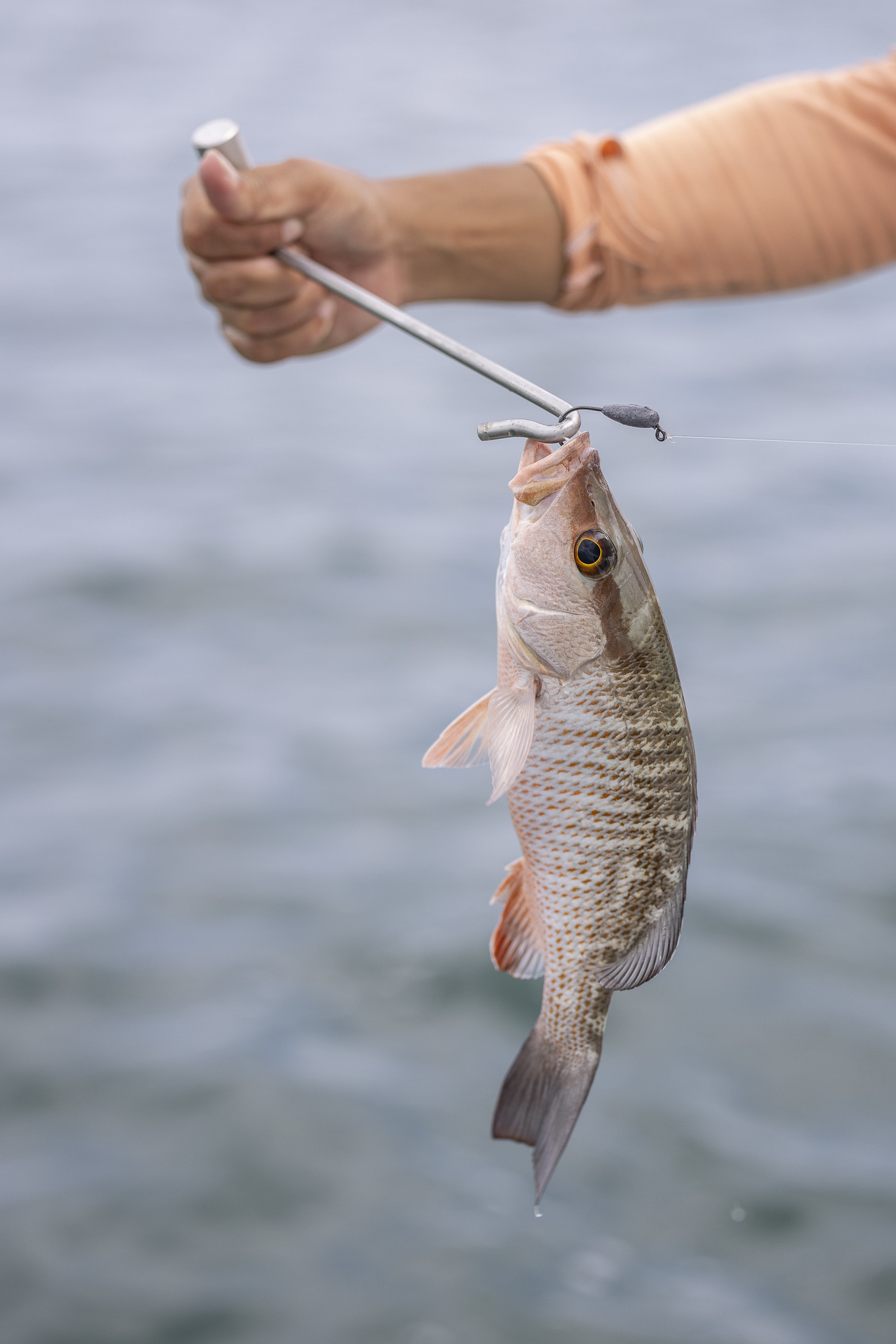
Improving Survival Rates
Research shows that fish released using the proper techniques for their species have significantly higher survival rates. By applying what you know about barotrauma and species-specific differences, you’re directly contributing to healthier fisheries and sustainable angling practices.
Learn More About Reducing Barotrauma
Explore Return ‘Em Right for science-based resources, tutorials, and training on proper fish handling and barotrauma mitigation. Eligible Gulf reef fish anglers can receive free release gear for completing an online training on barotrauma. Together, we can ensure that the fish we love to catch have the best chance to survive and thrive.



